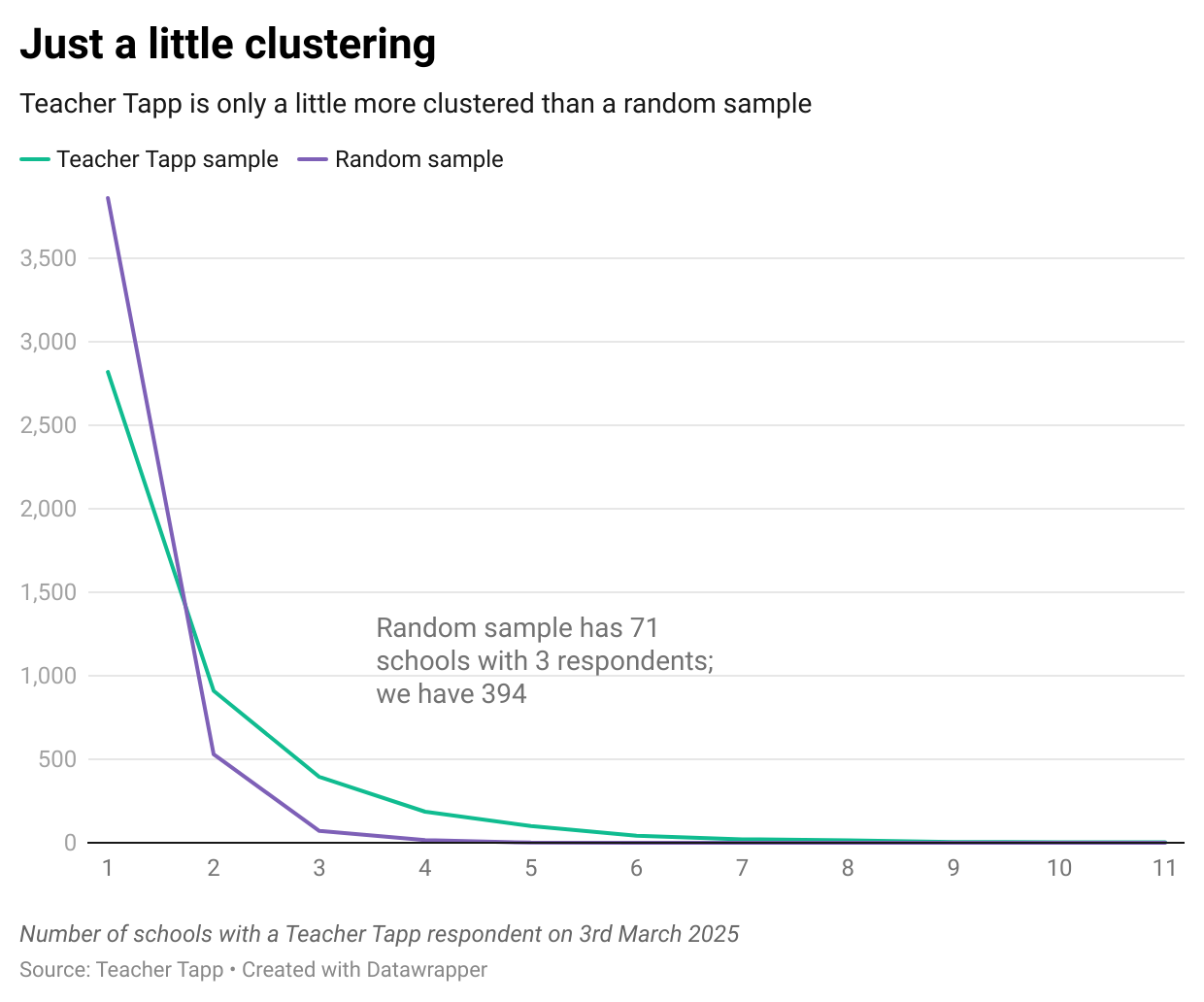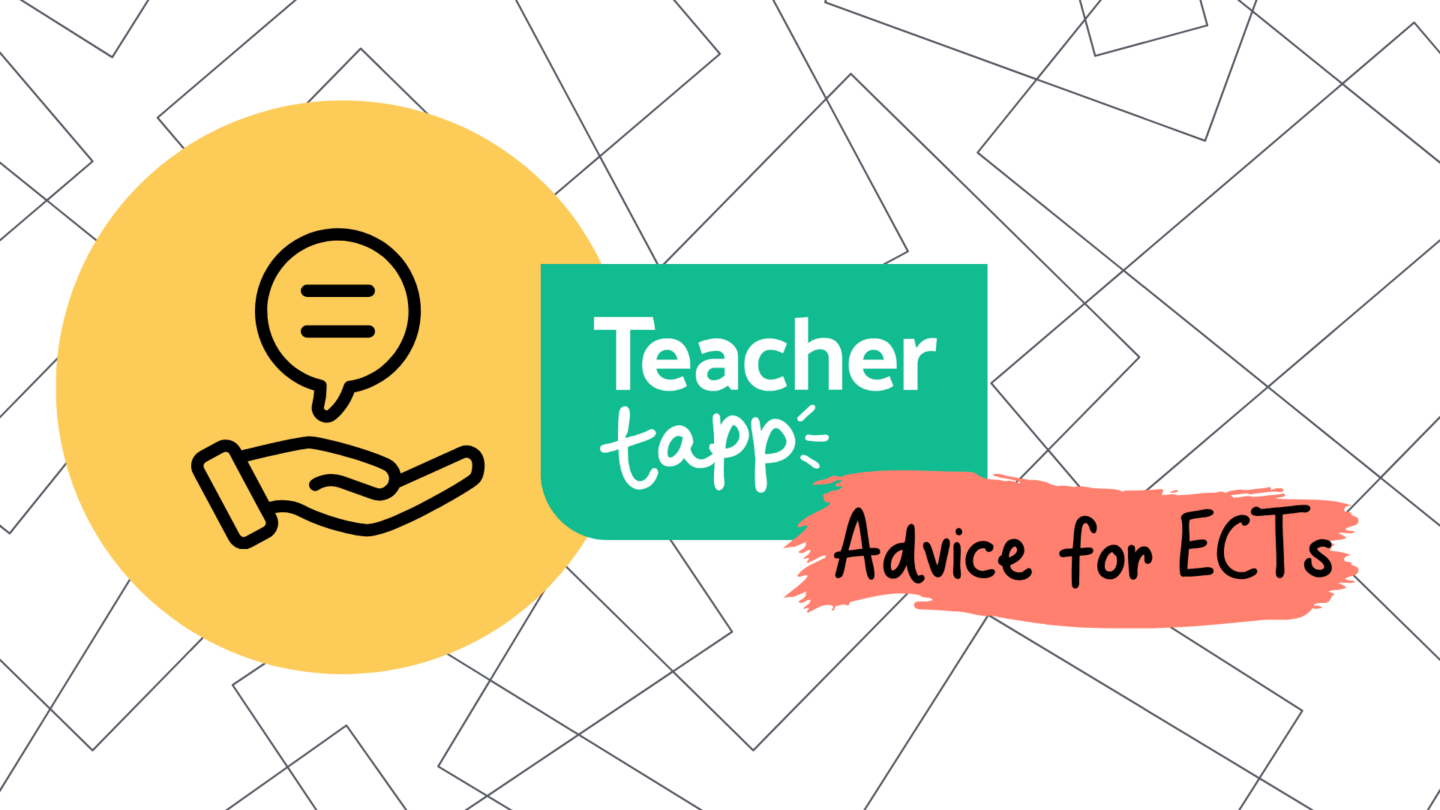Teacher Tapp is already by far the largest teacher survey in England, reaching over 10,000 teachers a day and over 12,000 a week. But where are the teachers who take our survey?
There are two different ways to find teachers. A survey can either recruit teachers in clusters by targeting the school or find a way to recruit individual teachers.
Teacher Tapp is NOT clustered – and for a good reason…
Some surveys, such as the OECD TALIS, are intentionally very clustered surveys. They first recruit a set of schools and then recruit a sample of teachers from within those schools. This has two big upsides: it is cheap to recruit the sample and you can conduct analysis of responses within schools as well as across schools. For example, do headteachers who say they place a high emphasis on professional development also have teachers who feel they get a lot of professional development?
However, clustered samples aren’t great for learning about variation in practice across schools. For example, if you ask 200 maths teachers whether they set by ability in Year 7, but they are only in 40 schools, then you won’t learn as much as if they were in 200 different schools.
How un-clustered is Teacher Tapp?
Teacher Tapp is, by design, a survey that recruits individual teachers rather than targeting a school to sign up their teachers en masse. Obviously, once a teacher hears about us, they often tell their colleagues! Which means we sometimes find a few people working in the same schools are on the app. But how common is that?
If we take our sample on just one day in March 2025, we find that more than half of our Tappers were the only teacher in their school to answer the three Teacher Tapp questions that day. Less than quarter were one of a pair answering that day at their school. And at the other extreme, one school had 13 teachers answering questions!

So, we have a bit of clustering in those schools where lots of teachers are answering questions. But is the clustering more or less than we would see if we had drawn a sample entirely at random?
Imagine we had a list of every teacher in the country and selected 4,500 entirely at random and managed to get them to agree to answer our questions. How frequently would end up with two, three, four or five respondents from a school?
The chart below shows what happens if we generate a random sample as a point of comparison (using School Workforce Census to count the number of teachers in each school). Teacher Tapp does have slightly fewer singleton schools (2,819) than a random sample (3,860) would have. Which means we have more clustered in groups of three, four or five in schools. Overall, however, we get a substantial spread – around 5,500 schools each day – which helps gives us a figure much closer to the random sample than a clustered sample would. We’ve managed to achieve this because we don’t recruit directly via headteachers and schools.

What is the biggest advantage of our method?
One brilliant advantage of having a huge and reasonably un-clustered sample is that we can reach LOTS of schools to find out exactly what is going on.
Suppose we want to answer a question that any teacher in the school can answer, such as:
- How long is your lunch hour?
- What phonics programme do you use?
- Do your Year 7 students sit an end of year examination in every subject?
- What curriculum do you follow in Year 9?
- Does your school put on a musical each year?
In the chart below we show how quickly we can reach schools by making a question available for just one day, (e.g. 2,857 primaries and 3,036 secondaries on the 1st March 2025), then for two days, for three days, … right up to seeing how many schools we can reach over a month. In March 2025 we reached 3,314 secondary schools and 3,477 primaries.

In a typical month we now have survey responses from teachers in over two-thirds of secondary schools!
Our reach in the primary sector is still lower, because there are many more primary schools (over 16,000) that we need to reach!
Know a primary teacher who might not have heard of us yet? Do encourage them to sign up and help us learn more about primary teaching!





